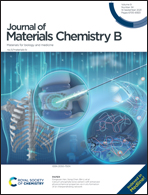Deep learning enabled classification of real-time respiration signals acquired by MoSSe quantum dot-based flexible sensors†
Abstract
Respiration rate is a vital parameter which is useful for the earlier identification of diseases. In this context, various types of devices have been fabricated and developed to monitor different breath rates. However, the disposability and biocompatibility of such sensors and the poor classification of different breath rates from sensor data are significant issues in medical services. This report attempts to focus on two important things: the classification of respiration signals from sensor data using deep learning and the disposability of devices. The use of the novel Janus MoSSe quantum dot (MoSSe QD) structure allows for stable respiration sensing because of unchanged wear rates under humid conditions, and also, the electron affinity and work function values suggest that MoSSe has a higher tendency to donate electrons and interact with the hydrogen molecule. Furthermore, for the real-time classification of different respiration signals, a 1D convolutional neural network (1D CNN) was incorporated. This algorithm was applied to four different breath patterns which achieved a state-of-the-art 10-trial accuracy of 98.18% for normal, 95.25% for slow, 97.64% for deep, and 98.18% for fast breaths. The successful demonstration of a stable, low-cost, and disposable respiration sensor with a highly accurate classification of signals is a major step ahead in developing wearable respiration sensors for future personal healthcare monitoring systems.



 Please wait while we load your content...
Please wait while we load your content...